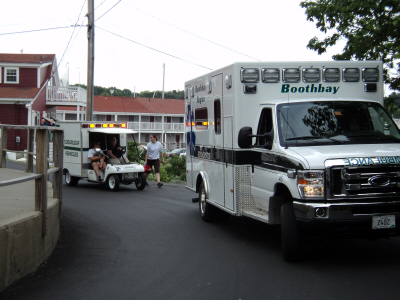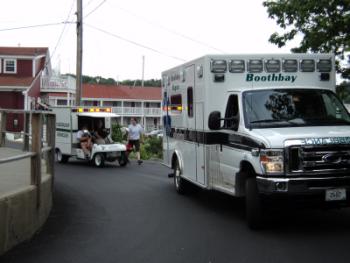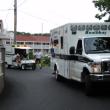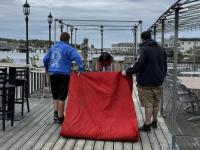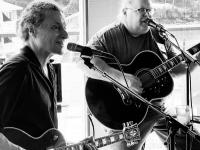Ambulance Service releases baseline report: How are we doing?
The Boothbay Region Health & Wellness Foundation and the Boothbay Region Ambulance Service are jointly releasing the first of what we hope will be an informative series of reports to inform Boothbay peninsula residents about the state of our emergency services and health outcomes for emergency patients. The Boothbay Region Ambulance Service 2012 Status Report will serve as a baseline we can all use to see how well our community is doing in our ability to respond to healthcare emergencies since we lost St. Andrews’ 24/7 ER and full service local hospital.
Scott Lash will discuss this report in a public forum at the BRAS on Thursday, April 17 from 6:30 to 8 p.m. at the Ambulance Service office at 18 Corey Lane. This public forum is a “Third Thursday” public forum sponsored by the Wellness Foundation. To give you a preview, here are some of the interesting facts contained in the report:
Our local ambulance service currently (2013) employs 31 staff members, including 12 paramedics, 7 AEMTs and 12 EMTs. Two of those individuals are full-time, 29 are part-time, 16 are local residents, 15 live out of town. The BRAS staff has a collective total of over 400 years of experience providing emergency services either on the peninsula or elsewhere.
In 2012 (the year for this baseline study), the average annual response time of BRAS was 8 minutes, the average total call time was one hour and 2 minutes.
Total call volume in 2012 was 1,627 (emergency and transfers); 807 of those were emergency calls; 423 required care at the advanced life support level, the 384 remainder required basic life support; 67 percent of them were 65 and over.
And, of course 92.6 percent of those patients went first to St. Andrews Hospital in 2012.
For emergency transport, the average patient bill was $955.14 for advanced life support, $504.88 for basic life support. Insurance paid 80 percent, secondary insurance or patient co-pays the other 20 percent of the allowable costs of $419.91 and $358.09 respectively.
Gail Evans explains why she and the foundation membership felt this report was important. We wanted to answer some important questions: prior to the closure of the St. Andrews Hospital Emergency Department, how many people needed life-saving emergency services; and how did they do as a result of their treatment?
With that information we are hoping to create a baseline against which to compare the outcomes of emergency care going forward.
Unfortunately, it’s not easy to answer both of those questions, because the healthcare system is not designed to answer seemingly simple questions.
To Maine’s credit, people are working on it. For now, the information that could answer those two questions is held by each healthcare provider (ambulance service, physician’s office, community and tertiary care hospital, long term care facility, and home care agency) and the information is organized to focus on their piece of the continuum. There is a lot of very favorable public data about the quality of care in the state and in Lincoln County, but it’s not organized from a community/patient point-of-view.
So, if you had a heart attack and did not go to the hospital by ambulance, you were not counted in our report, and we don’t know if you were admitted to the hospital, nor the outcome of your care. For those who arrived by ambulance and were admitted, or transferred to another hospital for more definitive treatment, we still don’t currently know the outcome of your care. If you were discharged to a nursing home, we currently don’t know if you were able to rehabilitate and return to your home. To answer the question: “how many people needed life-saving emergency services and how did they do as a result of their treatment?” we need all that information.
However, this is a great start! The 2012 Boothbay Region Ambulance Service Report provides a comprehensive picture of the first piece of the emergency treatment continuum: pre-hospital ambulance care.
We hope that the accountability and transparency demonstrated in this report will help to engage all of the providers who treat our local community members to participate in our quest to respond to the public’s two simple questions: How many of us needed emergency care? How well did that care work for us?
In the months ahead we’ll continue to pursue discussions with all the providers who cared for our local emergency patients. If we succeed, we will be among the first in the country to collaborate on such an endeavor. Wouldn’t that be in keeping with the spirit of innovation and cooperation that makes Boothbay such a special place to live?
Event Date
Address
United States

